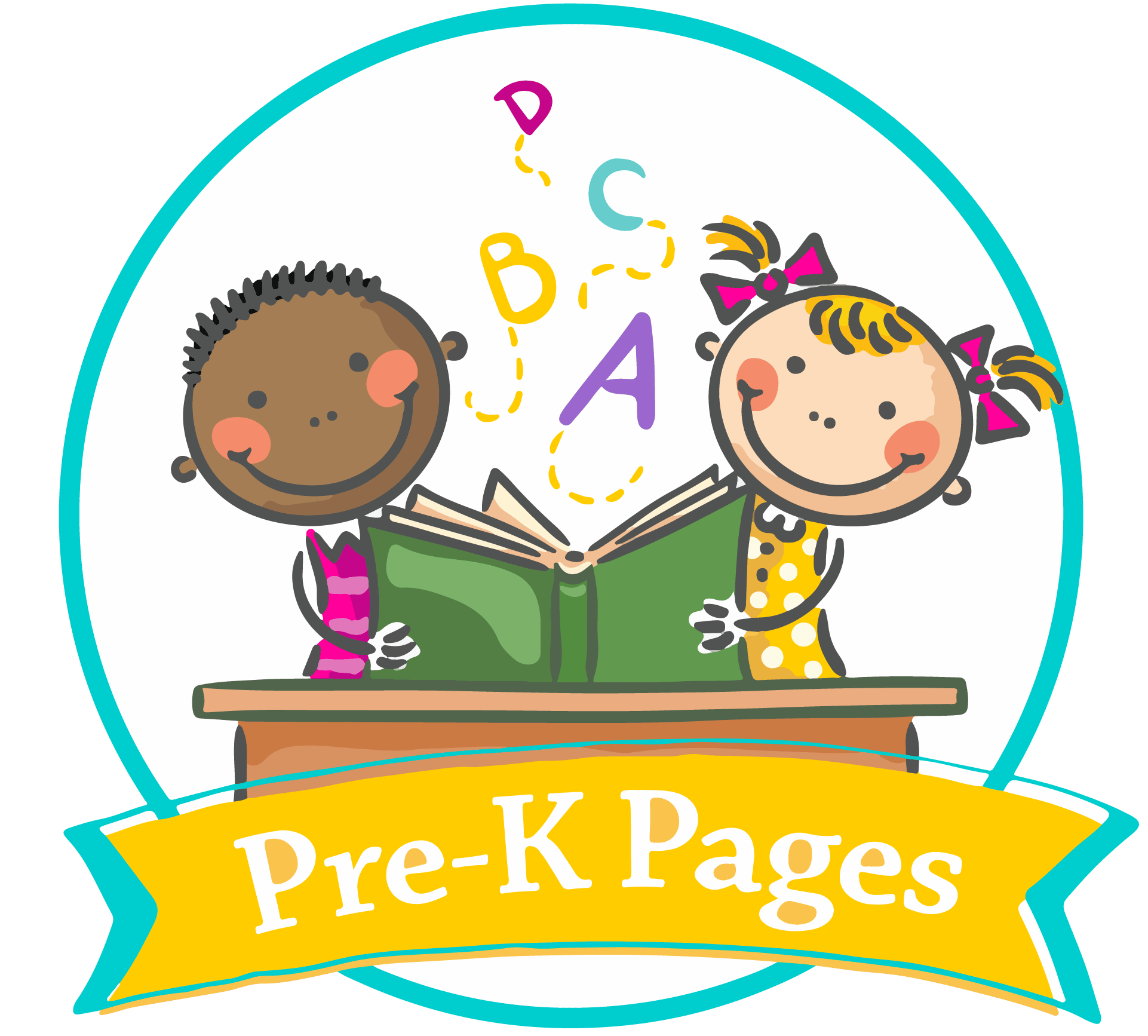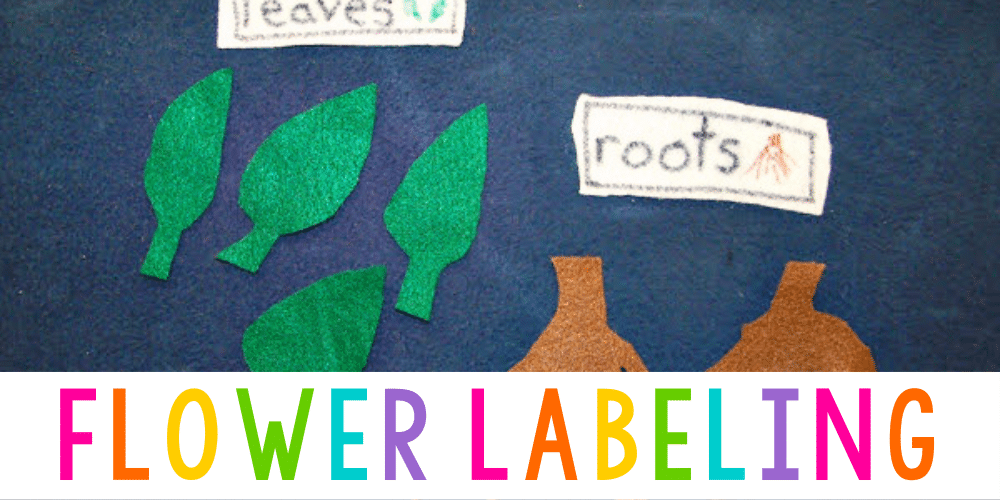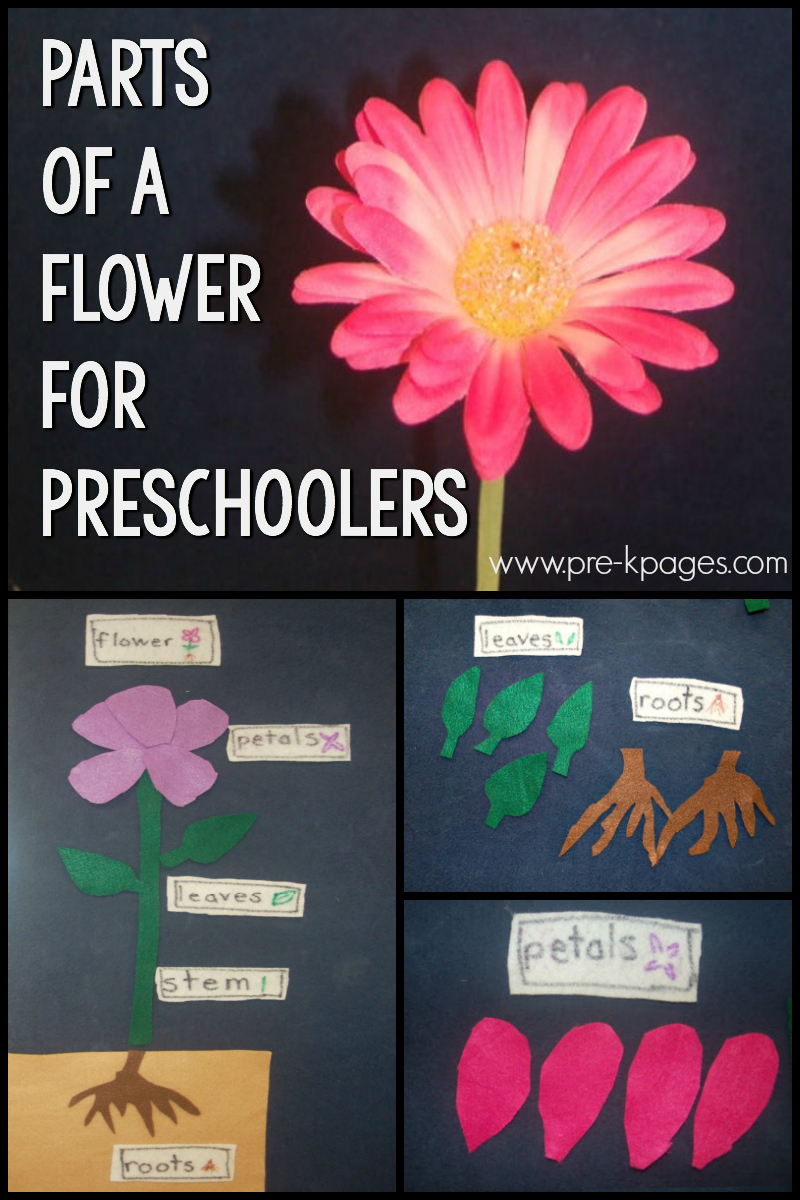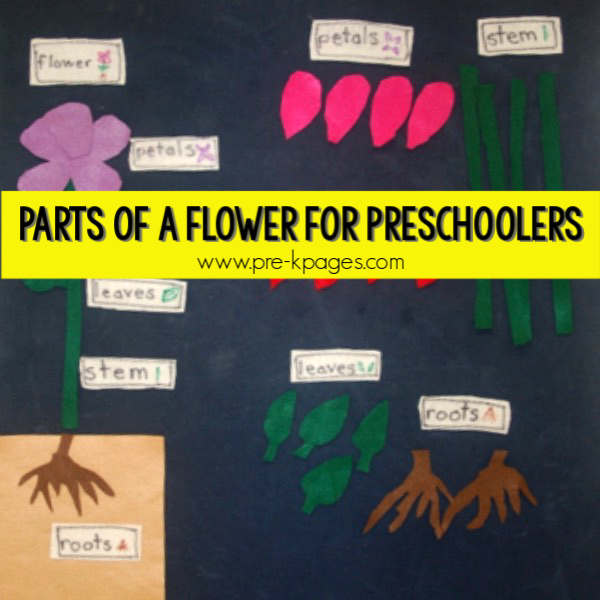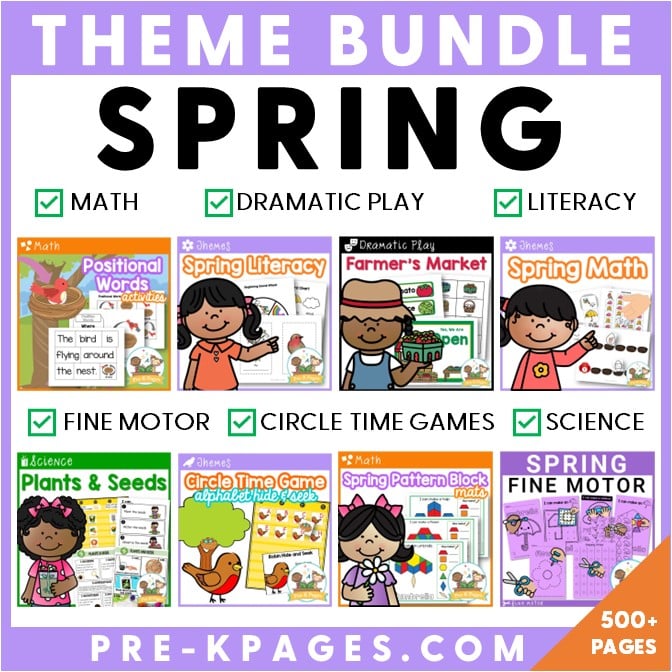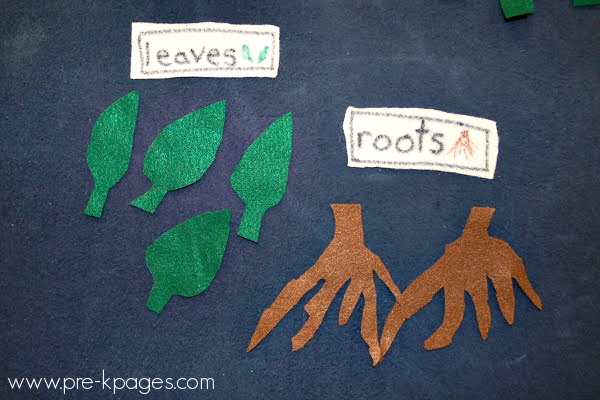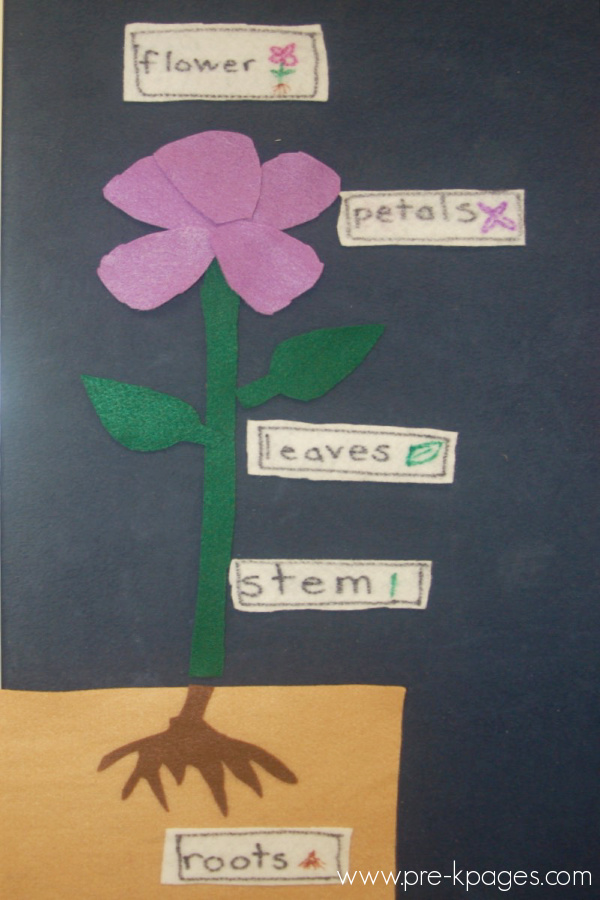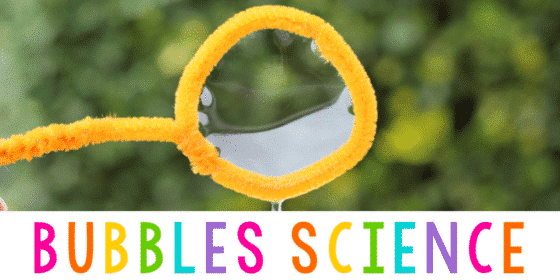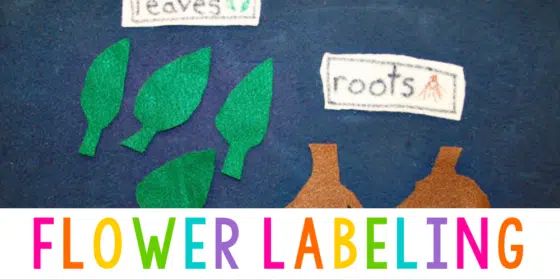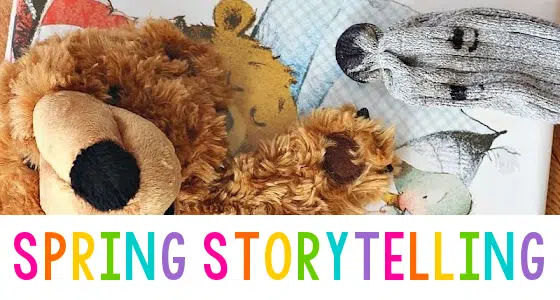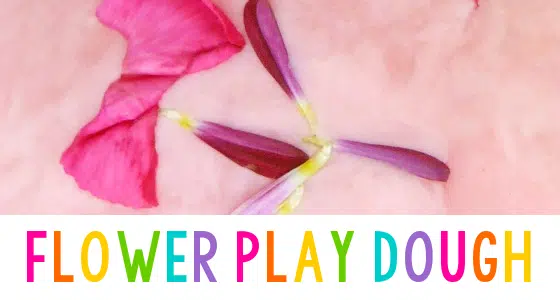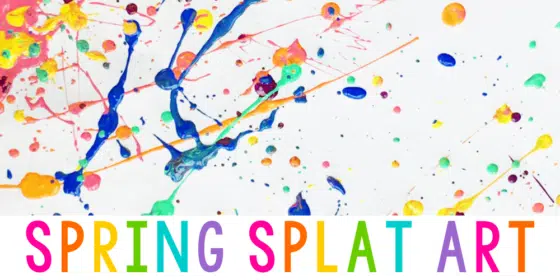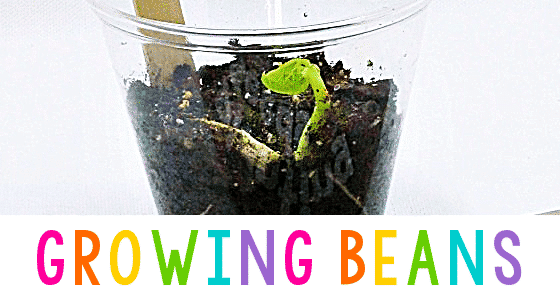Flowers brighten any day. Here is an easy prep activity allowing kids to have a hands-on plant experience, explore the parts of flowers and how they go together, and incorporate labels to identify parts of a flower. This activity is perfect for a spring theme or anytime you are exploring plant life cycles.
Science involves exploring and understanding the world around us. This activity builds science skills by helping boys and girls know more about flowers and their parts. This activity is not only science; it is math, too. Math is based on taking parts and joining them into a whole, and dividing a whole into parts. Individual parts of a flower are not much by themselves, but when they are put together, they make something different, and more complex – a flower.
Some books to support your flower making activity:
Flower Garden by Eve Bunting
Planting Rainbow by Lois Ehlert
Seed to Sunflower by Camilla de la Bedovere
Parts of a Flower for Preschoolers
Prepare the Activity
Supplies
- Felt: brown, white, green, and bright colored felt (for petals). Optional – use light brown for the soil
- Scissors
- Felt Board
- Picture of a flower with labels
- A few real flowers to examine
Check out this research-based, playful learning unit in our curriculum shop!
Ultimate Spring Themes Pre-K Lesson Plan Bundle
A bundle of 19 of our most popular spring theme resources, including math, literacy, circle time, fine motor, dramatic play - and more!
1. Cut out the various parts from felt: green stems, colorful petals, green leaves, brown roots.
2. Print the following words on white felt: roots, stem, leaves, petals, flower. To make the label look fancier, draw a box around the word. For children who need additional visual support, I draw a picture of the item on the label. This helps them know which label goes where. It also introduces the words for kids.
3. Include a visual, such as a picture of a real flower with labels, next to the felt board for reference.
Tip: Don’t be afraid to just cut the felt pieces freehand. They should not look perfect. If the model you made looks perfect, kids can get discouraged because they can’t do it as well as you. Besides, the kids will love whatever you do!
Introduce the Activity
Show kids a real flower. Ask probing open-ended questions such as:
- How do you think a flower gets water and food?
- Did you ever notice flowers close their petals when it is dark and open them during the day when the sun comes out? I wonder why?
The key is to get them thinking. You are not trying to give correct answers at this point. Part of science is letting minds wander and think about things. If you give them all the answers, it will curtail their natural curiosity. Use “I wonder” or other thinking/questioning phrases to stimulate thinking.
Identify the parts of the flower using a real flower and the felt flower: petals, stem, leaves, roots. Point to each part and name it. Point to the parts out of order and encourage children to name the part.
Making Flowers
Demonstrate how to build and take apart felt flowers with the materials. As kids spend more time doing this, they will come up with other uses for the parts, making additional designs.
The preschoolers can put together and pull apart their flowers and place them next to the labels. They can also mix and match to make different types of flowers.
As interest in the center wanes, add additional colors of petals or different shapes of petals and leaves to generate more creativity in creating flowers.
Why use labels?
This activity is a great way to incorporate labels with a scientific spin. Most kindergarten curriculum utilize labels. Introducing them now will help your kids in the future. It also helps them understand each part of a flower has a specific name and purpose. Using labels helps introduce a strong literacy aspect to your activity. Children can begin to connect printed words with ideas, concepts, and objects. As you use books about parts of flowers and plants, connect your labels to the pictures and words in the books.
Contributed by Carla Goldberg
Free Flower Math Game Printable
Looking for more flower fun? Get this printable flower math game sent to your email simply by filling out the form below.
